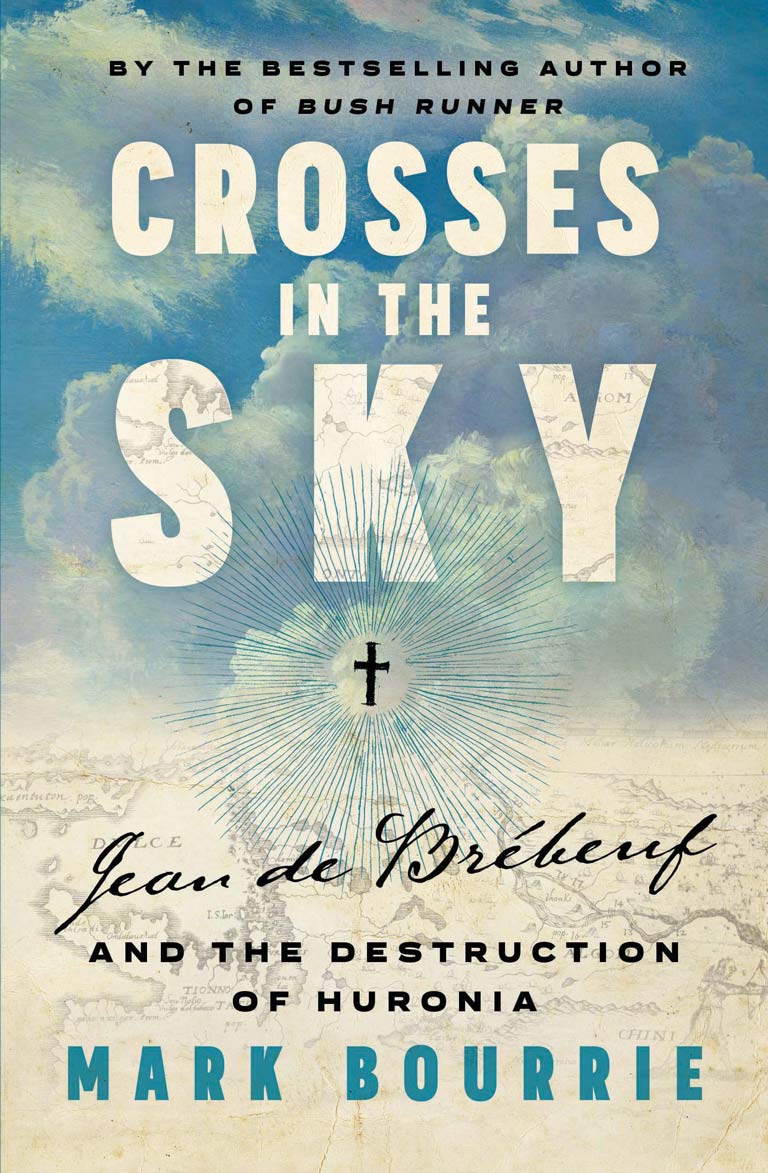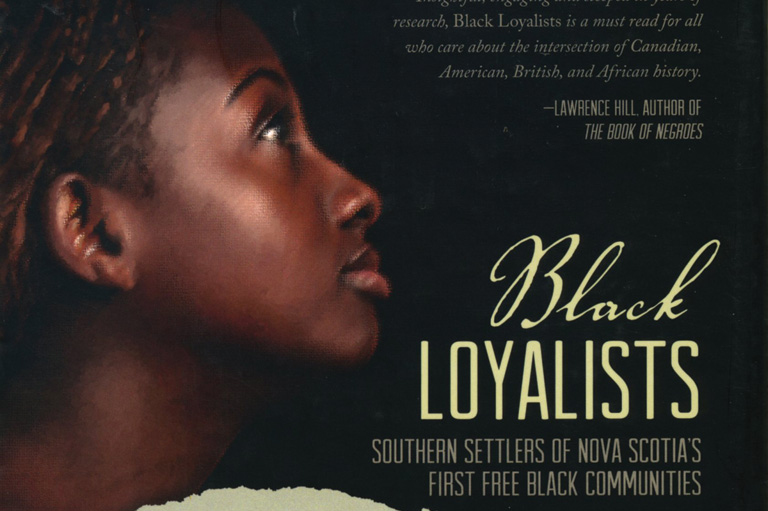Crosses in the Sky

Crosses in the Sky: Jean de Brébeuf and the Destruction of Huronia
by Mark Bourrie
Biblioasis
488 pages, $26.95
The Jesuit missionaries in New France have been variously portrayed as devout Catholics willing to die for their faith or as uncompromising zealots who perpetrated cultural genocide on Indigenous peoples. In Mark Bourrie’s book Crosses in the Sky, Jean de Brébeuf emerges as both of these things — and as an insecure, lonely man held in the thrall of a fundamentalist interpretation of Catholicism that demanded a harvest of souls and that fetishized pain and death.
Yet Crosses in the Sky is not only, or even primarily, a biography of Brébeuf. As Bourrie states in his introduction, the book is “meant to explain what happened when troubled Europe, ripped by civil and religious strife, collided with Indigenous nations that had never had to cope with rapid technological change and epidemics.” Bourrie’s colloquial writing style and storytelling skill make Crosses in the Sky accessible to a nonacademic audience. But be warned: This is not an easy read. It’s a saga of suffering and sorrow, punctuated by moments of heroism and bouts of religious fanaticism, that ends in tragedy for all involved.
Brébeuf’s part of the story begins in France with the founding of the Jesuit religious order by Ignatius Loyala in the 1530s. Bourrie portrays the early Jesuits as a sort of upper-crust fraternity of proselytizing priests: “This was an order of the rich, handsome, smart, and well-connected.” Not content to go around Europe stirring up conflict with the Protestants, the Jesuits set their sights on the inhabitants of the fledgling colony of New France. The Indigenous peoples’ souls, in the Jesuits’ view, were ripe for the picking, and the worst (or best) that could happen to a missionary was martyrdom at their hands.
Enter Brébeuf, the younger son of a minor noble. Brébeuf doesn’t believe he has priestly potential but offers himself as a lay brother to labour for Jesus. As Bourrie writes, “He would tell his colleagues, ‘I am an ox, only fit for carrying loads.’” However, the young recruit possesses three qualities that make him good missionary material: He’s devout, physically powerful, and has an unexpected gift for languages. After some mandatory training, he is shipped off to Quebec in 1625 and from there to Huronia — an area of present-day Ontario between Lake Simcoe and Georgian Bay populated by Indigenous people whom the French called Hurons and who are today more commonly known as Wendat or Huron-Wendat
With 7 uniquely curated newsletters to choose from, we have something for everyone.
Unfortunately for Brébeuf — and devastatingly for the Hurons — his arrival is closely followed by two waves of unidentified epidemic diseases in 1634 and 1636, and subsequently by an even worse wave of smallpox in 1639. Brébeuf hurries around Huronia baptizing people on their deathbeds — including babies and young children whom he “converts” to Christianity without their parents’ knowledge or consent.
Mistaking correlation for causality, the angry and grief-stricken Hurons believe that the black-robed missionary is a malevolent sorcerer casting death spells on their loved ones. A movement grows either to drive Brébeuf out of Huronia or to execute him for witchcraft; but doing so would jeopardize relations with the French, upon whom the Hurons depended for trade goods such as copper kettles and iron axe heads, as well as for support in their ongoing wars against the Haudenosaunee (also known as the Iroquois or Six Nations), who were allied with the British.
The long-simmering violence between the Hurons and Haudenosaunee reached new levels when English and Dutch traders began to supply guns to the Six Nations. The Hurons needed to defend themselves against these deadly new weapons, but their French allies would only sell guns to Catholics. This led to a wave of conversions, including among powerful chiefs. To paraphrase King Henri IV of France, a musket is worth a mass.
But the Jesuit version of Christianity wasn’t as simple as saying prayers on Sundays: It demanded of its converts a complete lifestyle change, including their refusal to participate in communal Huron feasts and rituals. Coming of top of waves of disease, the religious schism between Huron traditionalists and Christian converts tore communities apart and further weakened the Hurons at a time when their Haudenosaunee enemies’ strength was at its peak.
The tragic and well-known ending came when a coordinated force of guntoting Haudenosaunee warriors attacked Huronia in 1648–49, killing thousands, capturing thousands more, and forcing the remainder to flee for their lives. Brébeuf was captured, and his torture and martyrdom are described by Bourrie in great detail.
Writing about the Huron experience of these events is challenging, since primary-source material is scant, and most of it was written by missionary priests. Nevertheless, Bourrie manages to paint a general picture of Huron society and even introduces readers to a few memorable personages, such as the healer Tonneraouanont, “the best doctor with one of the most powerful orendas in the country, a master of herbal and ritual medicine.”
Though the brutal facts of history make this book difficult to read, it’s nevertheless an interesting and accessible retelling of an important chapter in Canadian history.
We hope you’ll help us continue to share fascinating stories about Canada’s past by making a donation to Canada’s History Society today.
We highlight our nation’s diverse past by telling stories that illuminate the people, places, and events that unite us as Canadians, and by making those stories accessible to everyone through our free online content.
We are a registered charity that depends on contributions from readers like you to share inspiring and informative stories with students and citizens of all ages — award-winning stories written by Canada’s top historians, authors, journalists, and history enthusiasts.
Any amount helps, or better yet, start a monthly donation today. Your support makes all the difference. Thank you!
Themes associated with this article
Advertisement
Save as much as 40% off the cover price! 4 issues per year as low as $29.95. Available in print and digital. Tariff-exempt!




